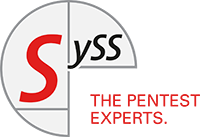Introduction: The growing importance of information security
In an increasingly digitalized business world, information security is no longer just an issue for large corporations. Companies of all sizes, from start-ups to traditional SMEs and global corporations, now rely on IT systems that have become the backbone of their business processes. However, the more a company relies on digital solutions, the more vulnerable it becomes to cyber attacks and vulnerabilities in its own infrastructure.
According to the World Economic Forum’s Global Cybersecurity Outlook 2024, the total damage caused by cybercrime will rise to an estimated 10.5 trillion US dollars per year by 2025. This means that cybercrime already exceeds many national gross domestic products in terms of the amount of damage. The figures are alarming, and yet many companies continue to rely on security concepts that are not up to the challenges of this new era.
This article highlights the weaknesses of fragmented security approaches and shows why holistic IT security strategies are the order of the day. It provides insights into current studies, presents practical examples and takes a look at forward-looking solutions – including integrated approaches such as those offered by Information Security Experts GmbH (ISX). The aim is to raise awareness of the complexity of modern IT security and help companies to establish long-term resilient concepts.
1 Fragmented security strategies and their limits
Anyone looking through the IT security landscape with open eyes will quickly come across a widespread phenomenon: the best-of-breed approach. Companies combine solutions from different manufacturers, often driven by the desire to use “the best” in each area. For example, a firewall from vendor A, endpoint security from vendor B, a SIEM (Security Information and Event Management) from vendor C and yet another solution for cloud management.
As logical as it sounds to choose the leading solution in each area, this approach proves to be problematic in practice. The biggest weakness is the lack of networking between the individual systems. It is comparable to a soccer team consisting of top-class individual players, but without joint training: in theory, each team member is excellent, but in practice they do not function as a unit.
1.1 Integration problems and lack of interoperability
These components are rarely designed to communicate seamlessly with each other. Each system has its own interfaces, data formats and communication protocols. This leads to considerable integration effort and, in the worst case, to security gaps because data or warning messages are not exchanged between the solutions, or only inadequately.
Practical example:
A medium-sized logistics service provider had five different security products in use. The firewall detected suspicious data traffic, the SIEM system saved log data and generated alerts in the event of anomalies. However, due to the lack of a correct API connection, many alerts got stuck at the firewall and never reached the SIEM. It took an external consultant to uncover this communication problem, fortunately before a serious security incident occurred.
1.2 Hidden costs due to external consulting and software licenses
The license costs for each additional partial solution can quickly add up. In addition, fragmented systems usually require external consultants for the initial implementation as well as for regular maintenance and update processes. At worst, redundancies (e.g. duplicate costs for similar modules) and shadow IT arise because employees prefer to use self-procured tools rather than complicated company software.
According to an IDC study, fragmented security concepts cause up to 34% higher long-term operating costs than integrated solutions. These additional costs result not only from licenses, but above all from ongoing maintenance and integration costs.
1.3 Security gaps in the “interface cracks”
It is a classic scenario when an attacker finds a vulnerability precisely where two partial solutions do not interact seamlessly. For example, endpoint security can raise the alarm while network monitoring is unaware of it, or vice versa. This effect is exacerbated if several service providers are involved, each of which only looks after its own component and does not feel responsible for the problems that go beyond this.
All in all, fragmented security strategies are a patchwork that costs a lot of money and effort, but can still have unexpectedly large gaps.
2. why holistic IT security approaches are becoming increasingly important
In view of the dynamic threat situation, which ranges from phishing and ransomware to zero-day exploits, reactive “firefighting tactics” in IT security are long outdated. Companies need solutions that:
- Proactively detect vulnerabilities before an attack occurs.
- Seamlessly cover all security-relevant areas, from network and servers to cloud environments and end devices.
- Automatically react to critical warning messages and at least be able to take initial countermeasures independently.
2.1 Centralized view of threats
A key feature of holistic security approaches is that all security-relevant information converges in a central system. There, it is analyzed using correlation and machine learning to identify patterns that indicate a potential threat. This makes it possible to identify intrusion attempts that would otherwise be lost in a flood of unrelated alerts.
Example:
- The firewall registers an unusually high number of failed login attempts.
- At the same time, an unknown user account appears in the Active Directory log.
- At the same time, the endpoint logs of a specific computer show increased process activity.
Viewed in isolation, these incidents may seem insignificant, but in combination they clearly indicate a possible hacker attack. A centralized security system can detect this in real time, generate an alert and respond proactively.
2.2 Efficient cost structure and clear responsibilities
Instead of many individual licenses with various maintenance and consulting contracts, an integrated solution often offers a uniform license model (all-in-one). Instead of paying from different pots, companies receive a calculable and usually lower total bill. In addition, maintenance responsibility is in one hand, which minimizes reconciliation and coordination problems.
This is precisely where providers such as Information Security Experts GmbH (ISX) come in by delivering an integrated security platform that covers all central security tasks, thereby reducing the need for third-party providers. This has the advantage that customers do not have to constantly find their way around new license models and different support structures, but can rely on clear responsibilities. The so-called “hot potato effect”, where nobody feels responsible, is eliminated. In a standardized system, it is clearly regulated that the provider who provides the complete package is also responsible.
3. what an integrated approach can look like in concrete terms
To make the abstract concept of a holistic solution more tangible, it is worth taking a look at the real world. Modern integrated IT security platforms are based on:
- Centralized management: A console that IT administrators can use to keep an eye on all components, from the network to the mobile device.
- Automated correlation: Artificial intelligence and machine learning recognize suspicious patterns that emerge from a wide variety of log and metadata.
- Proactive patch and vulnerability management: All connected systems receive updates and configurations according to the “one-click” principle.
- 24/7 monitoring: An integrated SOC (Security Operations Center) monitors the entire infrastructure around the clock and intervenes automatically in the event of critical incidents.
- Complete documentation: Automated reports and compliance overviews make it possible to meet regulatory requirements (e.g. GDPR, ISO 27001).
4th case study: From patchwork to integrated solution
For years, a medium-sized software company with around 500 employees relied on fragmented IT security products. A firewall solution from provider A, endpoint security from provider B, cloud scanners from provider C and regular consulting services to keep the interaction of these systems halfway functional.
4.1 Initial situation
- High annual maintenance costs, as there were separate support contracts for each product.
- Regular security gaps because patches and updates often could not be applied simultaneously.
- Overloaded IT department that spent too much time manually analyzing log files and alerts from different systems.
4.2 Introduction of an integrated approach
Together with ISX, the company opted for a standardized security platform that covers the network, cloud and end devices in equal measure. All components were brought together under one roof and controlled via a central interface.
- Uniform configuration of all security policies (e.g. password requirements, access rights).
- Automated monitoring: An AI system continuously analyzes log data from all areas of the IT infrastructure.
- Regular security updates are now automated and centrally controlled.
4.3 Results after twelve months
- Cost savings of around 25 %: By eliminating the need for several external consultants and duplicate license costs.
- Reduction in security incidents by 40 %: Many potential attacks were identified and blocked early on in the network.
- Relief for the IT department: The central dashboard and automated alerts significantly reduce manual effort.
Employees reported that IT finally has time again for strategic and innovative projects instead of “only” reacting to supposed security incidents. The CIO described the switch as a “liberating blow”, as the company can now take action in terms of IT security instead of constantly waiting for the next alert.
5. outlook for the future: Threats and solutions
The threat landscape is evolving at a rapid pace. Cybercrime is no longer limited to well-known malware, but also relies on:
- Artificial intelligence to develop and conceal new attack vectors.
- Social engineering in combination with deepfakes or chatbots.
- Zero-day exploits that hit newly discovered software vulnerabilities before manufacturers can react.
Companies that rely on fragmented security solutions find it difficult to keep up with this pace. Every new wave of attacks requires an update of the existing tools, if they are compatible at all. This once again demonstrates the advantage of an integrated security concept. As soon as the central provider detects a new threat, the entire platform is updated. In a fragmented environment, each individual solution would have to be updated separately.
In addition, the topic of “Security-as-a-Service” could become increasingly important in the future, with external providers not only supplying software, but also complete security processes and teams. In this way, companies ultimately buy all-round carefree security, similar to how cloud storage is booked today. ISX is already pursuing this approach by providing everything from consulting to implementation and operation from a single source, so that customers do not have to put together an additional “security puzzle”.
6 Conclusion: Holistic IT security as the key to success
The days when a single antivirus program or firewall was sufficient are long gone. IT security has become a highly complex undertaking that constantly has to cover new attack surfaces and challenges. Fragmented solutions from different sources can often no longer meet this requirement and also cause high costs and coordination effort.
A holistic approach, on the other hand, reduces complexity, facilitates the implementation of new technologies and relieves the burden on IT departments. Companies benefit from:
- Seamless interoperability without integration gaps.
- Cost efficiency through central license and maintenance contracts.
- Proactive threat prevention thanks to automated threat detection and real-time reactions.
One example is the integrated security platform from ISX, which combines all areas of IT security, from network and endpoint protection to cloud monitoring.
Clear responsibilities and efficient processes give companies the freedom they need to concentrate on their core business instead of having to juggle alerts around the clock.
Final thought: A comprehensive security strategy initially sounds more expensive than buying individual tools. However, only an integrated concept can ensure that all areas are fully covered and that there are no gaps in responsibility in the event of an emergency. This is precisely why a holistic security concept is doubly worthwhile: it protects against attacks and opens up long-term strategic perspectives for the company. After all, IT security is no longer a secondary cost factor, but a decisive competitive factor in a digitalized world.
Sources (selection)
- World Economic Forum. (2024). Global Cybersecurity Outlook 2024.
- Cybersecurity Ventures. (2024). Global Cybercrime Report.
- IDC Research. (2023). Cost analysis of fragmented security architectures.
- Cloud & Threat Report 2024(various publishers)
- Federal Office for Information Security (BSI). (2023). BSI status report on IT security.
- Information Security Experts GmbH (ISX). (2025). Integration concepts in IT security (company documentation).






